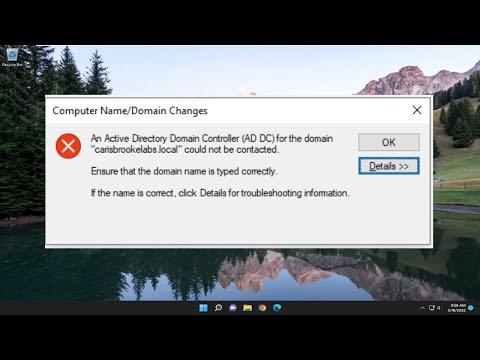When dealing with DNS issues in an Active Directory Domain Controller, I found that a structured approach is essential for resolving problems efficiently. My experience with this issue has taught me that the first step is always to understand the underlying role of DNS in Active Directory and then proceed with systematic troubleshooting.DNS (Domain Name System) is crucial for Active Directory (AD) because it provides the name resolution services necessary for locating domain controllers and other network services. In an AD environment, DNS allows the domain controllers to locate each other and authenticate users properly. Without proper DNS functionality, Active Directory cannot operate smoothly, leading to authentication issues, replication problems, and other critical failures.The first step in troubleshooting DNS issues in an AD environment is to ensure that the DNS service is running correctly on the domain controllers. I start by checking the DNS service on the domain controllers. This involves logging into the domain controller and navigating to the DNS Manager. Here, I verify that the DNS Server service is running. If it’s not running, I start it and then check if the issue persists.Next, I check the DNS server logs for any errors or warnings that might provide insight into the problem. The DNS logs can be accessed via Event Viewer. Errors in the DNS logs can give clues about issues such as misconfigurations, failed zone transfers, or other DNS-related problems. By examining these logs, I can often pinpoint the cause of the DNS issues.One common issue I encounter is related to the DNS zone configuration. Active Directory relies on DNS zones, specifically the Active Directory-integrated zones, for domain functionality. I ensure that the DNS zones are correctly configured and are replicated properly. In the DNS Manager, I verify that the zones for the domain and the forest are present and are correctly configured as Active Directory-integrated zones. This means that the zone files are stored in the AD database, which allows for replication across all domain controllers.Another critical aspect is checking DNS resolution. I use tools like nslookup or ping to verify that DNS resolution is working correctly. For instance, I check if I can resolve the domain controller’s name to its IP address and vice versa. This step helps ensure that the domain controllers can communicate with each other and that clients can locate the domain controllers. If nslookup fails to resolve names, I investigate further by checking the DNS records in the DNS Manager to make sure they are correct.I also pay close attention to DNS delegation and zone transfers. In cases where there are multiple DNS servers, it’s crucial to ensure that DNS zones are properly delegated and that zone transfers are working. Misconfigured delegation or failed zone transfers can lead to incomplete DNS data, which can cause various issues. I check the delegation settings in the DNS Manager to ensure that the parent and child zones are properly linked and that zone transfers are correctly configured.Consistency across domain controllers is another important factor. I verify that all domain controllers have consistent DNS settings. Inconsistent DNS settings can lead to intermittent issues and can make troubleshooting more complex. I check the DNS settings on each domain controller to ensure that they are all pointing to the correct DNS servers and that the settings are consistent across the network.In addition to checking DNS configurations, I also examine network connectivity. Network issues can sometimes cause DNS problems. I ensure that there are no network connectivity issues between the domain controllers and DNS servers. I use tools like ping and tracert to test connectivity and to identify any potential network problems that might affect DNS resolution.Another critical area I explore is the DNS cache. Sometimes, stale or corrupted DNS cache entries can cause issues. I clear the DNS cache on the domain controllers and clients to rule out any problems related to cached DNS data. This can be done using the ipconfig /flushdns command on clients and the dnscmd /clearcache command on DNS servers.Finally, I review the AD and DNS health using tools like dcdiag and netdiag. These tools help in diagnosing common issues with domain controllers and DNS. dcdiag can provide a comprehensive report on the health of the domain controllers, including DNS-related tests. netdiag can help identify network issues that might impact DNS resolution.In conclusion, troubleshooting DNS issues in an Active Directory Domain Controller involves a systematic approach that includes checking DNS service status, reviewing DNS logs, verifying DNS zone configurations, testing DNS resolution, examining DNS delegation and zone transfers, ensuring consistency across domain controllers, checking network connectivity, clearing DNS cache, and using diagnostic tools. By following these steps, I have been able to resolve DNS issues effectively and ensure the smooth operation of Active Directory in my network.
How To Troubleshoot DNS Issues In An Active Directory Domain Controller [Tutorial]
